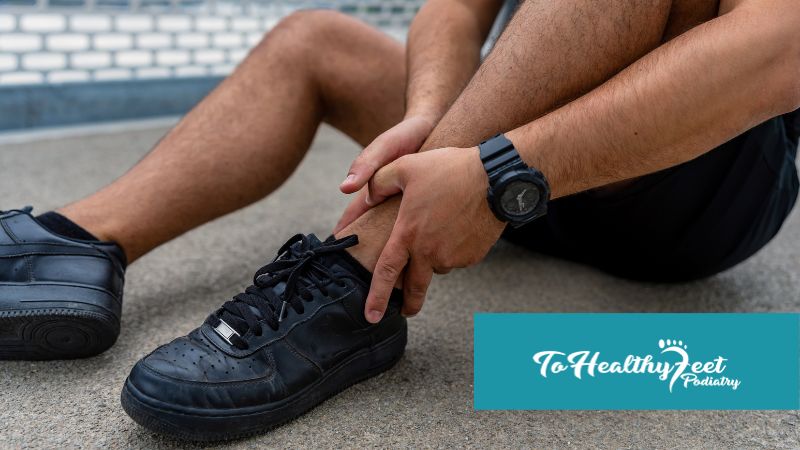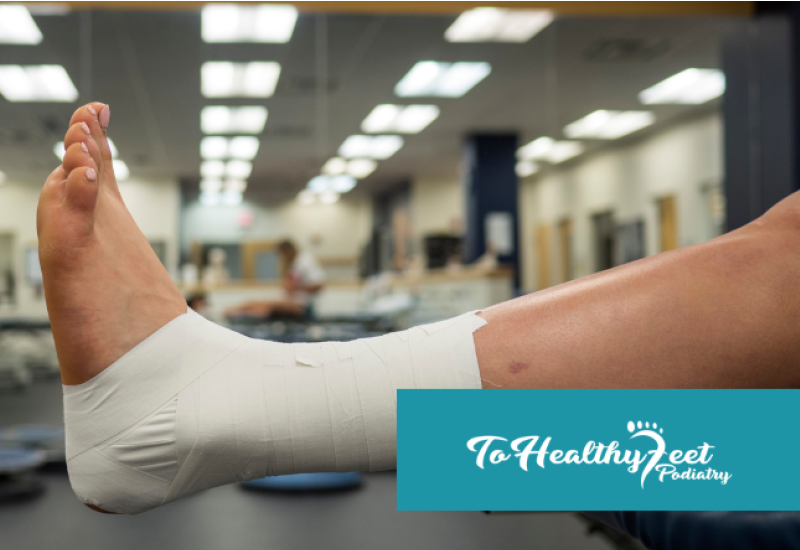Ankle sprains are one of the most common injuries, especially among athletes and active individuals. However, not all ankle sprains are the same. There are significant differences between high ankle sprains and low ankle sprains, both in terms of their causes and their treatment. Understanding these differences is crucial for proper diagnosis and care. At To Healthy Feet Podiatry, we aim to provide comprehensive information and compassionate care to help you recover swiftly and effectively from any ankle injury.
What is a Low Ankle Sprain?
Low ankle sprains, also known as lateral ankle sprains, are the most common type of ankle injury. They occur when the foot rolls inward, stretching or tearing the ligaments on the outside of the ankle. This type of sprain often happens during activities that involve running, jumping, or quickly changing direction, such as basketball, soccer, or tennis.
Symptoms of Low Ankle Sprains:
- Swelling around the ankle
- Bruising and discoloration
- Pain on the outer side of the ankle
- Difficulty bearing weight on the affected foot
Treatment for Low Ankle Sprains:
- Rest, Ice, Compression, and Elevation (RICE)
- Over-the-counter pain relievers
- Physical therapy to strengthen the ankle and restore range of motion
- In severe cases, immobilization with a brace or boot
What is a High Ankle Sprain?
High ankle sprains are less common but often more severe than low ankle sprains. They involve the ligaments that connect the tibia and fibula, which are located above the ankle joint. These sprains usually result from a twisting injury where the foot is forced outward while the leg rotates inward, often seen in high-impact sports like football and hockey.
Symptoms of High Ankle Sprains:
- Pain above the ankle, specifically between the tibia and fibula
- Swelling that extends up the leg
- Difficulty walking or bearing weight
- Pain that worsens with activity
Treatment for High Ankle Sprains:
- Rest and avoiding weight-bearing activities
- Ice and anti-inflammatory medications
- Physical therapy focused on stability and strength
- In severe cases, surgical intervention may be necessary to repair the damaged ligaments
Diagnosis and Imaging
Accurate diagnosis of the type of ankle sprain is essential for appropriate treatment. At To Healthy Feet Podiatry, we use a combination of clinical examination and imaging techniques to determine the extent and nature of the injury.
Diagnostic Methods:
- Physical examination to assess pain, swelling, and range of motion
- X-rays to rule out fractures
- MRI or ultrasound for detailed images of soft tissue and ligaments
Why Imaging is Important:
- Ensures a correct diagnosis
- Helps in planning the most effective treatment strategy
- Prevents complications and promotes better outcomes
Recovery Time and Rehabilitation
Recovery time for ankle sprains can vary significantly depending on the severity and type of sprain. Low ankle sprains typically heal faster, while high ankle sprains may require a longer recovery period.
Low Ankle Sprain Recovery:
- Mild sprains: 1-3 weeks
- Moderate sprains: 3-6 weeks
- Severe sprains: 6-12 weeks
High Ankle Sprain Recovery:
- Mild to moderate sprains: 6-8 weeks
- Severe sprains: 3-4 months or longer, especially if surgery is required
Rehabilitation Focus:
- Gradual return to weight-bearing activities
- Strengthening exercises for the ankle and lower leg muscles
- Balance and proprioception training to prevent future injuries
Prevention Tips
Preventing ankle sprains is always better than dealing with the aftermath of an injury. Here are some tips to help you avoid ankle sprains in the first place:
- Footwear: Wear supportive shoes that fit well and are appropriate for your activity
- Warm-Up and Stretching: Always warm up before exercising and stretch your muscles, particularly those around your ankles
- Strength and Balance Training: Incorporate exercises that strengthen your lower leg muscles and improve your balance
- Be Cautious: Be mindful of uneven surfaces and avoid activities that put you at risk of twisting your ankle
Understanding the differences between high and low ankle sprains is crucial for proper treatment and recovery. At To Healthy Feet Podiatry, we are dedicated to providing personalized care and effective treatment plans to help you get back on your feet.
If you or a loved one is recovering from an ankle sprain, don't hesitate to reach out to us for personalized care and treatment plans. Our team of experienced professionals is committed to helping you regain mobility, restore function, and enjoy a pain-free lifestyle. Take the first step towards a healthier, happier future by scheduling a consultation today at one of our 4 convenient locations: Grand Central, Downtown Manhattan, Times Square, and Upper East Side!
Written on behalf of To Healthy Feet Podiatry.
FAQs
Q: When should I see a doctor for an ankle sprain?
A: You should visit To Healthy Feet Podiatry if you have severe pain, significant swelling, inability to bear weight, or if the symptoms do not improve with home treatment.
Q: Can ankle sprains be prevented?
A: Yes, by wearing supportive footwear, warming up before exercise, strengthening lower leg muscles, and being cautious on uneven surfaces.
Q: What rehabilitation exercises are recommended for ankle sprains?
A: Rehabilitation includes strengthening exercises for the ankle and lower leg muscles, balance and proprioception training, and a gradual return to weight-bearing activities.




